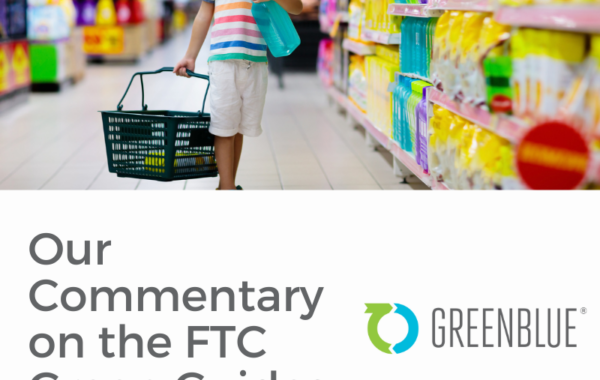October 31, 2017
The session “Moving from Aspiration to Impact” at SPC Advance 2017 in Pittsburgh was not about the packaging industry’s hopes and dreams for recycling (although we love hopes and dreams!). Rather, it was a deep dive into existing industry initiatives that are experiencing significant success today in building the quality of recycled plastics. The panel discussed the exceptional momentum around the How2Recycle® program and the APR Design® Guide, and those programs’ tools and insights that brands and packaging producers can leverage to make their packaging more recyclable. The session also touched on how the Tag and Label Manufacturers Institute (TLMI) and its label initiatives for PET packaging, and design decisions made by companies like The Coca-Cola Company, are contributing to the resilience of recycling.
How2Recycle helps brands track, measure, and improve the recyclability of their packaging
As was explored in other sessions at SPC Advance, brands and retailers are now setting more and better corporate goals to make their packaging more recyclable. These ‘next generation’ goals are really promising, but what comes next in that story? I explained in the session that brands and retailers can leverage How2Recycle and its new Member Platform to make their packaging goals a reality.
When we talk about moving from aspiration to impact, there’s nothing more tangible than an on-package label, right there, helping people.

For brands who are already in How2Recycle, these on package labels amplify their sustainable packaging goals and help tell their packaging stories. Brands who aren’t yet members of How2Recycle should join the program in order to show consumers how recyclable their packaging is today, and how it’s improving into the future. Communication with consumers should be a critical piece in this journey towards more recyclable packaging. And since half of consumers in our survey tell us that the How2Recycle label changes their recycling behavior, this is good news for recyclers.
But the How2Recycle label also can really help its member companies. That’s because every How2Recycle label is the result of a custom recyclability assessment. In this way, it can serve as a mirror, showing a company how recyclable its packaging really is—and sometimes it’s surprising.
With the new How2Recycle Member Platform, members can (a) really scale their use of the How2Recycle label on packaging, and (b) track, measure and improve the recyclability of their packaging with specific design recommendations and dynamic recyclability analytics. You can read more about the platform here.
The APR Design® Guide helps brands know how to select pressure sensitive labels for PET packaging that are designed for recycling.
John Standish, Technical Director at APR, gave a compelling overview of how small packaging design decisions can make a powerful impact on recycling. Specifically, there are easy ways to support plastics recycling through choices of pressure sensitive labels for PET packaging. Pressure sensitive labels have historically been a problem for PET recyclers because of how the label substrate, adhesive, and ink interact with the recycling process. John explained that during the plastic reclamation process, a ‘good’ label is one where the substrate fully liberates from the PET bottle or container, while carrying the adhesive and ink along with it so it does not contaminate the PET. The label also should float in water.

In this image, John explained how the label at left is preferred for recyclers, because the label (top left) is fully liberated from the PET (bottom left). On the right, you can see how the PET is stained blue from the ink of the label (middle right), and not all the label pieces separate from the PET (bottom right).
In order to source the labels that help build valuable feedstocks for PET recycling, companies can look to the test protocols and guidance in the APR Design® Guide to know from a practical and technical perspective how they can precisely improve their packaging design.
If Coke can do it, so can you
Sarah Dearman, who leads sustainable packaging at The Coca-Cola Company, explained how there are multiple considerations at play when she analyzes recyclability of Coca-Cola’s packaging: is the closure material floatable? Is the material free of recycling contaminants? Does the label adhesive wash off, has the label passed APR’s test protocol for ink? Is recycled content being utilized? These questions help illuminate future areas of improvement in packaging recyclability.
In the photo above, it’s Coca-Cola’s Simply Orange® label that stands out (at left) as one that is optimal for recyclers. Sarah explored in the session how Coca-Cola is achieving more recyclable packaging by working with its suppliers, who are developing recycling compatible label innovations.
Sarah also shared how the How2Recycle label is a great conversation starter internally at Coca-Cola about packaging recyclability. For example, her colleagues in procurement or marketing found it easier to understand the drivers to make more recyclable packaging when they could see how design choices can impact what How2Recycle label ultimately would apply to it.
Collaboration can fill in our knowledge gaps
There are also partnerships and collaborations that can continue to build momentum for PET packaging that is designed for recyclability. Dan Muenzer, President of TLMI, talked about how brands can benefit from engaging more directly with label suppliers on sustainability issues, especially as complexity in labeling innovations keep on growing. For example, TLMI’s L.I.F.E. program certifies labels that use recycling compatible adhesives, and are designed to minimize waste. TLMI also celebrates labels that are designed for recyclability—existing proof of how industry can collaborate and push packaging forward together.





